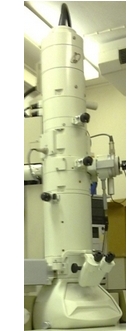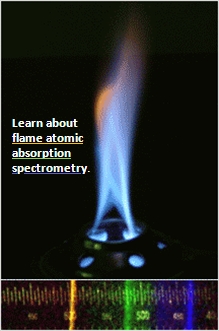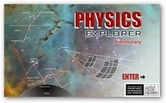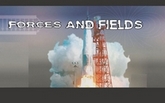Light and matter
|
Try a quiz to check your knowledge of light and matter.
©Anton19 CC-BY-SA 3.020  Learn more about microscopes, telescopes and spectroscopy. |
Interested in Science and in year 11 or 12? Find out about the 2011 International Science School47. It could change your life! See also Sites2See: Nobel Prize Physics48. |
Links
- http://www.daviddarling.info/encyclopedia/R/Rutherfords_experiment_and_atomic_model.html
- http://livefromcern.web.cern.ch/livefromcern/antimatter/academy/AM-travel00.html
- http://press.web.cern.ch/press/PressReleases/Releases2002/PR13.02EATRAP.html
- http://public.web.cern.ch/public/en/Research/MinChall-en.html
- http://public.web.cern.ch/public/en/Science/StandardModel-en.html
- http://www.lbl.gov/abc/Basic.html
- http://www.ansto.gov.au/discovering_ansto/publications_audio_video_and_images/videos
- http://www.ansto.gov.au/research/bragg_institute/facilities/molecular_deuteration
- http://www.infoplease.com/ce6/sci/A0859284.html
- http://astronomyonline.org/Science/NatureOfLight.asp?Cate=Home&SubCate=MP01&SubCate2=MP040108
- http://www.juliantrubin.com/bigten/lightexperiments.html
- http://library.thinkquest.org/22601/advanced/einstein.html
- http://physics.about.com/od/lightoptics/f/photon.htm
- http://imagine.gsfc.nasa.gov/docs/science/know_l1/emspectrum.html
- http://lighttheory.com/light/abstract.htm
- http://library.thinkquest.org/28160/english/index.html
- http://biology.clc.uc.edu/Courses/Bio104/photosyn.htm
- http://www.cee.vt.edu/ewr/environmental/teach/smprimer/aa/aa.html
- http://de.wikipedia.org/wiki/Benutzer:Anton
- http://creativecommons.org/licenses/by-sa/3.0/deed.en
- http://www.curriculumsupport.education.nsw.gov.au/secondary/science/downloads/movies/jacobsenp.html
- http://public.web.cern.ch/public/en/LHC/LHC-en.html
- http://www.atlas.ch/etours.html
- http://www.alternativeenergyprimer.com/Artificial-Photosynthesis.html
- http://en.wikipedia.org/wiki/File:Nellis_AFB_Solar_panels.jpg
- http://www.abc.net.au/tv/newinventors/txt/s3008638.htm
- http://www.questacon.edu.au/indepth/photonics/
- http://www.fox10tv.com/dpps/entertainment/consumer_tech/toshiba-unveils-glasses-free-3-d-tv-wd10-jgr_3602919
- http://www.colorado.edu/physics/2000/lasers/index.html
- http://www.abc.net.au/science/articles/2009/08/24/2665129.htm
- http://www.msnbc.msn.com/id/3077363/
- http://www.crnano.org/whatis.htm
- http://www.curriculumsupport.education.nsw.gov.au/secondary/science/downloads/evolution/roberson.htm
- http://velocity.ansto.gov.au/velocity/ans0010/article_03.asp
- http://cheller.phy.georgiasouthern.edu/gears/Units/2010%20Workshop/Kepler/Intro-Kepler-Activity.html
- http://coolcosmos.ipac.caltech.edu/cosmic_classroom/classroom_activities/herschel_experiment.html
- http://hubble.nasa.gov/
- http://coolcosmos.ipac.caltech.edu/cosmic_classroom/multiwavelength_astronomy/multiwavelength_astronomy/observing.html
- http://www.anu.edu.au/Physics/Savage/TEE/site/tee/learning/doppler/doppler.html
- http://www.nasa.gov/topics/technology/features/new-nano.html
- http://lrrpublic.cli.det.nsw.edu.au/lrrSecure/Cli/Download.aspx?resID=6165&v=1&preview=true&target=PUBLIC
- http://lrrpublic.cli.det.nsw.edu.au/lrrSecure/Cli/ResourceInfo.aspx?resID=6165&v=1
- http://lrrpublic.cli.det.nsw.edu.au/lrrSecure/Cli/Download.aspx?resID=4786&v=1&preview=true&target=PUBLIC
- http://lrrpublic.cli.det.nsw.edu.au/lrrSecure/Cli/ResourceInfo.aspx?resID=4786&v=1
- http://lrrpublic.cli.det.nsw.edu.au/lrrSecure/Cli/Download.aspx?resID=8459&v=1&preview=true&target=PUBLIC
- http://lrrpublic.cli.det.nsw.edu.au/lrrSecure/Cli/ResourceInfo.aspx?resID=8459&v=1
- http://www.physics.usyd.edu.au/foundation/iss/iss.shtml
- http://lrrpublic.cli.det.nsw.edu.au/lrrSecure/Cli/Download.aspx?resID=6447&v=1&preview=true&target=PUBLIC
- http://www.delicious.com/CLIsites2see/Light_and_matter
- http://www.curls.edu.au/search.php/all/








